5 Popular Drapery Pleating Styles in Chattanooga, TN
May 16, 2022Custom draperies add beauty, texture, color, and depth to any room in your Chattanooga area home. They also give you a lot of flexibility in choosing the perfect design because you can customize everything from the fabric to the trim to the pleating style.
A pleat is a fold in the fabric that adds volume, texture, and detail to a drapery panel. Adding pleats to your draperies can create uniform proportions and spacing at the panel header. They also give your draperies structure and shape; without them, your drapery panels can look limp and lifeless. Pleats are one of the details that make custom draperies stand out from off-the-rack, premade options.
The pleating style you choose directly impacts how the fabric will hang, the fullness and stack back of the drapery, and how functional your panels will be. You have a lot of choices available, so we’ve put together a list of the five most popular drapery pleating styles to help you decide.
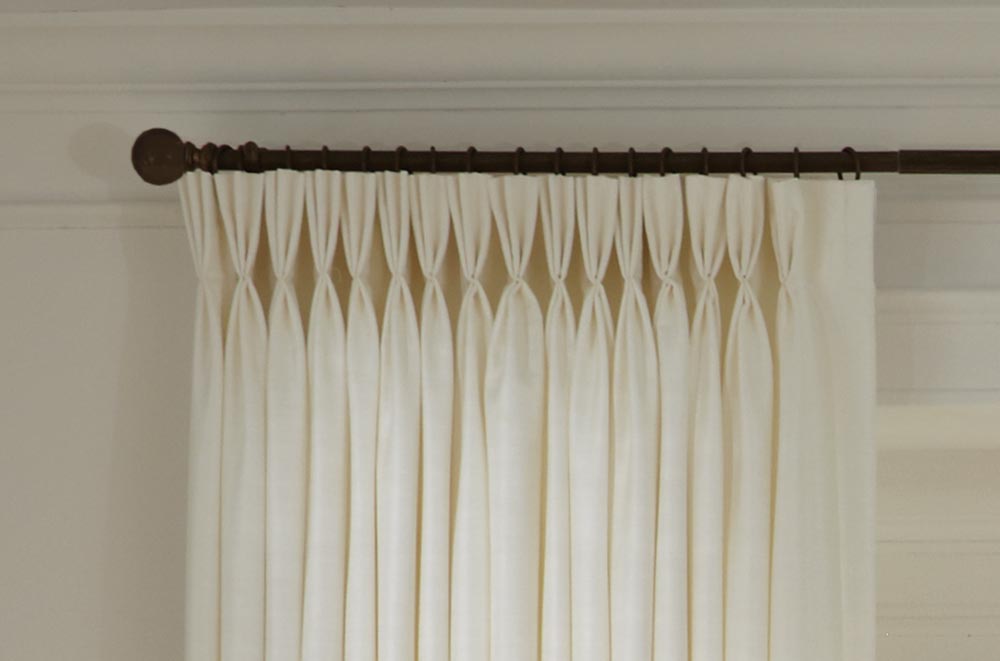
1. French pleated drapery
French pleats, also known as pinch pleats, consist of narrow and closely spaced folds called fingers. They appear to be “pinched” at the base and form fans above and below the pleat. If you choose draperies with a french pleat, they will hold the line of the pleat from the fan at the top to the bottom of the hem.
Of all the styles we’re going to share today, the french pleat is one of the most traditional and creates a full, classic appearance. This timeless style gives your room an elegant, finished look and offers a uniform fullness throughout the drapery. The closer the folds are to each other, the fuller your drapery panel will be. One of the reasons we love french pleated draperies is because they offer that large volume but require little-to-no styling each time you open or close your window coverings.
To achieve that fullness, french pleated drapery tends to use about two-and-a-half times the fabric of the panel width. That creates a large stack back, which is the amount of space the drapery takes up when opened. If you want an unobstructed mountain view, you’ll need to ensure you have plenty of room to the right and left of the window to mount the brackets for the drapery rod.
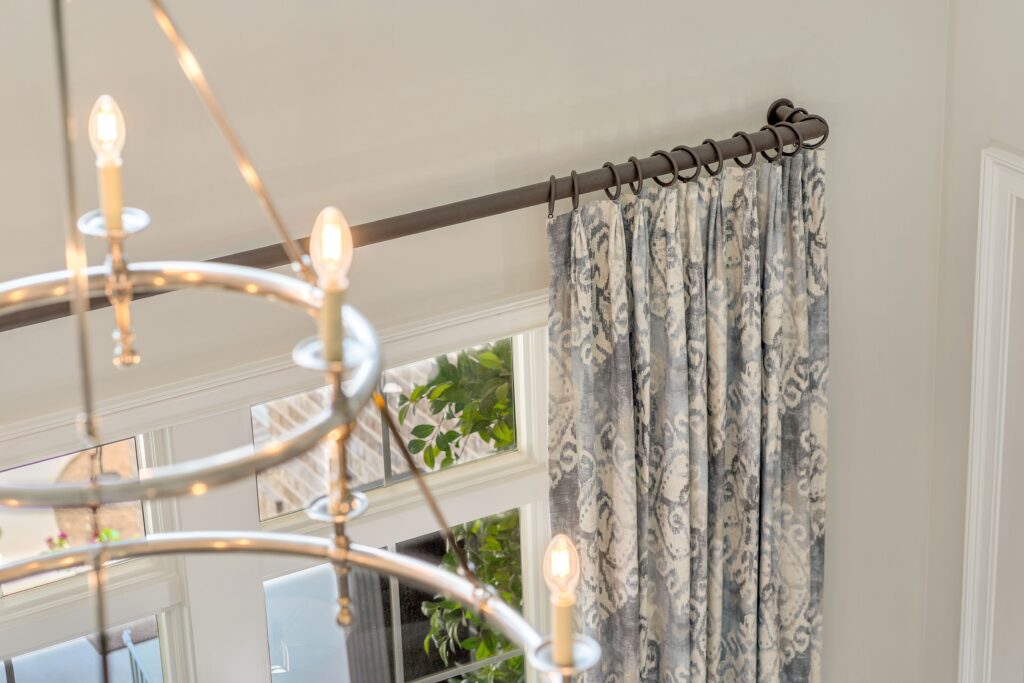
2. Euro pleated drapery
The euro pleat, also called a Parisian pleat, is a modern twist on the french pleat. The folds are pinched at the top and open at the bottom, allowing the fabric to flow with elegant ease down to the floor. Euro pleated drapery gives the illusion of length because the folds continue straight to the top of the panel.
Like french pleated drapery, euro pleated drapery is very full. It also uses about two-and-a-half times the fabric of the panel width, so it has a large stack back.
Euro pleated drapery is very easy to open and close and requires minimal styling when doing so. Because it’s a modern twist on the french pleat, it not only looks fantastic in a traditional home but also in contemporary and transitional style homes.
Read also: Master Bedroom Drapery for a Relaxing Retreat in Black Creek
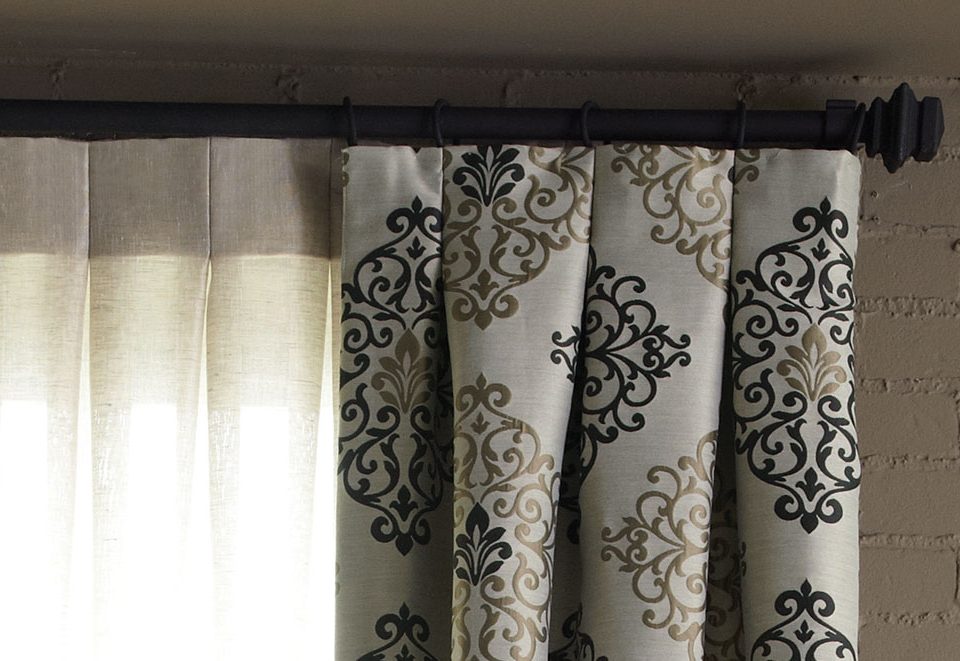
3. Box pleated drapery
A box pleat, also known as a tuxedo pleat, is achieved by folding two lengths of fabric away from each other in opposite directions. The folds meet in the middle of the backside of the fold. The fabric is gathered and sewn together to form a box at the top of your drapery, which holds that shape down to the bottom of the panel.
Box pleated drapery has a full and luxurious look but with a smaller stack back than the previous two styles. If you want draperies with lots of volume but don’t have enough space to the sides of your window, we recommend choosing a box pleat. Like the euro and french pleat, box pleated draperies are functional and offer a uniform look with little-to-no styling.
The box pleat is a clean and tailored style with a structured header and a more relaxed body. It works for almost any interior design style, but we particularly love it in traditional homes.
Read also: Trend Report: Top 9 Window Treatment Trends to Watch in 2021
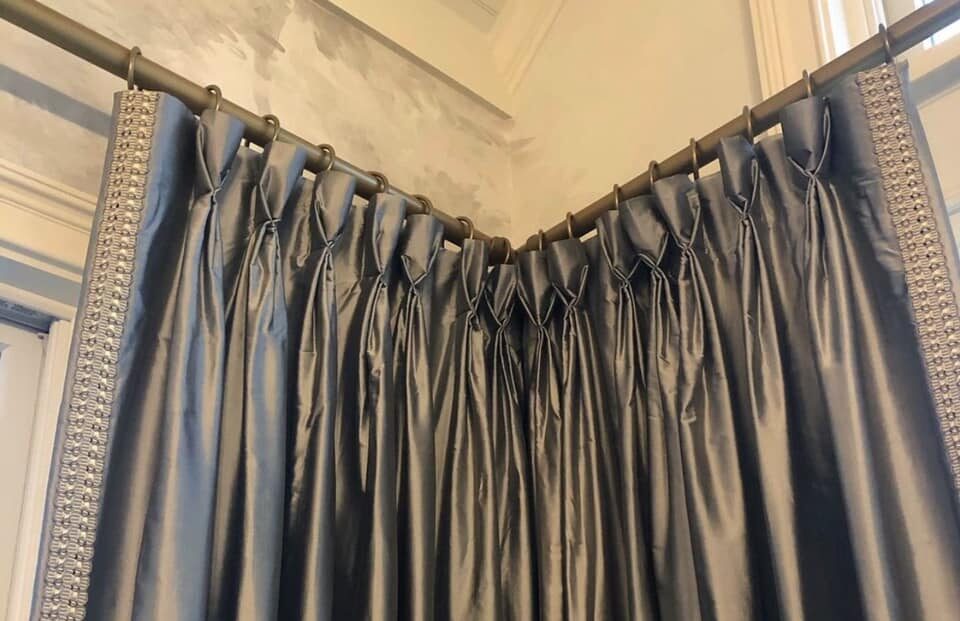
4. Goblet pleated drapery
Goblet pleats are formed by creating small folds below the drapery header. As its name suggests, each pleat looks like a mini goblet or wine glass. They offer an elegant and sophisticated style and make any room look more formal.
Unlike the styles we’ve already discussed, goblet pleated draperies are great for decorative purposes but not for functional applications. If you want stationary panels that frame a window, then goblet pleats might be the perfect choice. Just make sure you have plenty of room beside your window because they have a large stack back.
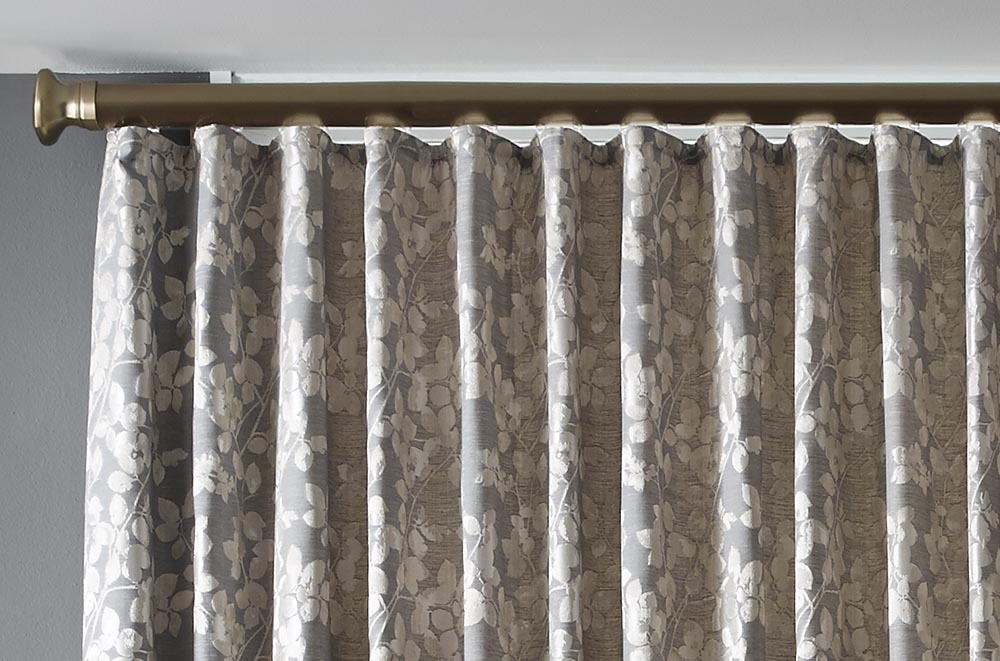
5. Ripplefold drapery
A ripplefold is a sleek and modern option that looks great in contemporary homes. The drapery panel itself is flat, and the pleating is created by spacing out snaps, also called carriers, on the fabric and attaching them to the hardware. As the panel is connected to the hardware, the snaps create an undulating wave pattern.
Ripplefold drapery is very easy to operate because it glides effortlessly along a specialized track system while maintaining its shape. Because ripplefold draperies require tracks and carriers, your hardware choices are more limited. And it can be difficult to conceal the hardware unless you pair your draperies with a top treatment.
Read also: Everything You Need to Know About Layering Window Treatments
3 questions to help you choose the perfect pleating style
Picking drapery pleating styles for your Chattanooga area home involves balancing aesthetics with functionality. We will gladly talk to you about which pleats would look the best in your space, but here are three questions you can ask to help you narrow down your choices:
- What’s the style of the room? Consider whether your style is contemporary, transitional, or traditional.
- How do you want the draperies to hang? You might wish for your drapery panels to have a tailored look and hold the lines from the header to the floor. Or, you might want a more relaxed look that’s structured at the top but billowing as the drapery falls to the floor.
- Do the drapery panels need to be functional? Think about whether you will be opening and closing your draperies often or if they will be stationary and simply frame your window.
As you can see, you can completely customize your draperies based on the pleating style you choose. You can further personalize your draperies by layering them with shades, cornices, and other window coverings to create a unique look. We’d love to help you design the perfect window coverings for your home. Contact us today!

